(Image Caption: Young Neurons (pink), Responsible For Encoding New Memories, Must Compete With Mature

(Image caption: Young neurons (pink), responsible for encoding new memories, must compete with mature neurons (green) to survive and integrate into the hippocampal circuit. Credit: Kathleen McAvoy, Sahay Lab)
Making memories stronger and more precise during aging
When it comes to the billions of neurons in your brain, what you see at birth is what get — except in the hippocampus. Buried deep underneath the folds of the cerebral cortex, neural stem cells in the hippocampus continue to generate new neurons, inciting a struggle between new and old as the new attempts to gain a foothold in the memory-forming center of the brain.
In a study published online in Neuron, Harvard Stem Cell Institute (HSCI) researchers at Massachusetts General Hospital and the Broad Institute of MIT and Harvard in collaboration with an international team of scientists found they could bias the competition in favor of the newly generated neurons.
“The hippocampus allows us to form new memories of ‘what, when and where’ that help us navigate our lives,” said HSCI Principal Faculty member and the study’s corresponding author, Amar Sahay, PhD, “and neurogenesis—the generation of new neurons from stem cells—is critical for keeping similar memories separate.”
As the human brain matures, the connections between older neurons become stronger, more numerous, and more intertwined, making integration for the newly formed neurons more difficult. Neural stem cells become less productive, leading to a decline in neurogenesis. With fewer new neurons to help sort memories, the aging brain can become less efficient at keeping separate and faithfully retrieving memories.
The research team selectively overexpressed a transcription factor, Klf9, only in older neurons in mice, which eliminated more than one-fifth of their dendritic spines, increased the number of new neurons that integrated into the hippocampus circuitry by two-fold, and activated neural stem cells.
When the researchers returned the expression of Klf9 back to normal, the old dendritic spines reformed, restoring competition. However, the previously integrated neurons remained.
“Because we can do this reversibly, at any point in the animals life we can rejuvenate the hippocampus with extra, new, encoding units,” said Sahay, who is also an investigator with the MGH Center for Regenerative Medicine.
The authors employed a complementary strategy in which they deleted a protein important for dendritic spines, Rac1, only in the old neurons and achieved a similar outcome, increasing the survival of the new neurons.
In order to keep two similar memories separate, the hippocampus activates two different populations of neurons to encode each memory in a process called pattern separation. When there is overlap between these two populations, researchers believe it is more difficult for an individual to distinguish between two similar memories formed in two different contexts, to discriminate between a Sunday afternoon stroll through the woods from a patrol through enemy territory in a forest, for example. If the memories are encoded in overlapping populations of neurons, the hippocampus may inappropriately retrieve either. If the memories are encoded in non-overlapping populations of neurons, the hippocampus stores them separately and retrieves them only when appropriate.
Mice with increased neurogenesis had less overlap between the two populations of neurons and had more precise and stronger memories, which, according to Sahay, demonstrates improved pattern separation.
Mice with increased neurogenesis in middle age and aging cohorts exhibited better memory precision.
“We believe that by increasing the hippocampus’s ability to do what it supposed to do and not retrieve past experiences when it shouldn’t can help,” Sahay said. This may be particularly useful for individuals suffering from post-traumatic stress disorder, mild cognitive impairment, or age-related memory loss.
More Posts from Smparticle2 and Others
The Myth of Prometheus

Before the creation of humanity, the Greek gods won a great battle against a race of giants called the Titans. Most Titans were destroyed or driven to the eternal hell of Tartarus. But the Titan Prometheus, whose name means foresight, persuaded his brother Epimetheus to fight with him on the side of the gods.

As thanks, Zeus entrusted the brothers with the task of creating all living things. Epimetheus was to distribute the gifts of the gods among the creatures. To some, he gave flight; to others, the ability to move through water or race through grass. He gave the beasts glittering scales, soft fur, and sharp claws.

Meanwhile, Prometheus shaped the first humans out of mud. He formed them in the image of the gods, but Zeus decreed they were too remain mortal and worship the inhabitants of Mount Olympus from below. Zeus deemed humans subservient creatures vulnerable to the elements and dependent on the gods for protection. However, Prometheus envisioned his crude creations with a greater purpose. So when Zeus asked him to decide how sacrifices would be made, the wily Prometheus planned a trick that would give humans some advantage. He killed a bull and divided it into two parts to present to Zeus. On one side, he concealed the succulent flesh and skin under the unappealing belly of the animal. On the other, he hid the bones under a thick layer of fat. When Zeus chose the seemingly best portion for himself, he was outraged at Prometheus’s deception.

Fuming, Zeus forbade the use of fire on Earth, whether to cook meat or for any other purpose. But Prometheus refused to see his creations denied this resource. And so, he scaled Mount Olympus to steal fire from the workshop of Hephaestus and Athena. He hid the flames in a hollow fennel stalk and brought it safely down to the people. This gave them the power to harness nature for their own benefit and ultimately dominate the natural order.

With fire, humans could care for themselves with food and warmth. But they could also forge weapons and wage war. Prometheus’s flames acted as a catalyst for the rapid progression of civilization. When Zeus looked down at this scene, he realized what had happened. Prometheus had once again wounded his pride and subverted his authority.

Furious, Zeus imposed a brutal punishment. Prometheus was to be chained to a cliff for eternity. Each day, he would be visited by a vulture who would tear out his liver and each night his liver would grow back to be attacked again in the morning. Although Prometheus remained in perpetual agony, he never expressed regret at his act of rebellion. His resilience in the face of oppression made him a beloved figure in mythology. He was also celebrated for his mischievous and inquisitive spirit, and for the knowledge, progress, and power he brought to human hands.

He’s also a recurring figure in art and literature. In Percy Bysshe Shelley’s lyrical drama “Prometheus Unbound,” the author imagines Prometheus as a romantic hero who escapes and continues to spread empathy and knowledge. Of his protagonist, Shelley wrote, “Prometheus is the type of the highest perfection of moral and intellectual nature, impelled by the purest and the truest motives to the best and noblest ends.” His wife Mary envisaged Prometheus as a more cautionary figure and subtitled her novel “Frankenstein: The Modern Prometheus.” This suggests the damage of corrupting the natural order and remains relevant to the ethical questions surrounding science and technology today. As hero, rebel, or trickster, Prometheus remains a symbol of our capacity to capture the powers of nature, and ultimately, he reminds us of the potential of individual acts to ignite the world.
From the TED-Ed Lesson The myth of Prometheus - Iseult Gillespie
Animation by Léa Krawczyk ( @lea–krawczyk )

Austria
Taken By SusanK31



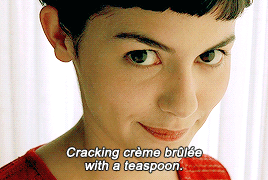


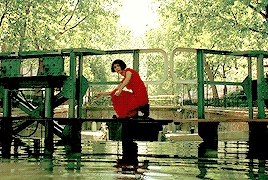
Amélie doesn’t have a boyfriend. She tried once or twice, but the results were a let-down. Instead, she cultivates a taste for small pleasures.
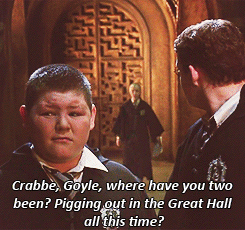
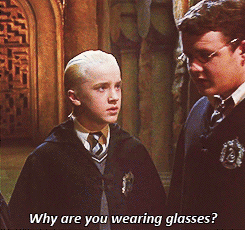
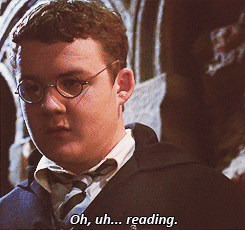

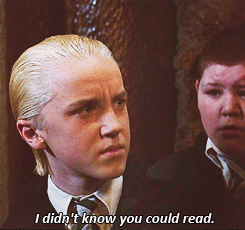
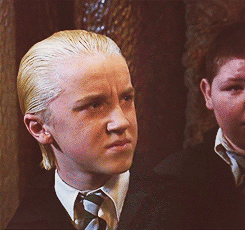

Mesquite Dunes | California (by Chris Lazzery)

Mickey Mouse Remastered
1928 vs. 2014
https://www.youtube.com/watch?v=2VdAV0Yp_Gg

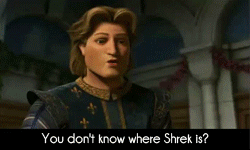
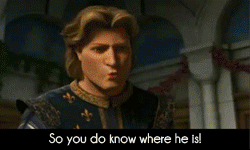

The Art of Lying


“One of the things I always admired about Clark Gable was between scenes, he didn’t go lock himself up in his trailer. He would hang out with the guys, the electricians, they all loved him. He was not full of himself. It was nothing to come to set and find him straddling a bench, playing gim rummy with the crew.” -Ann Rutherford
According to legend, Pythagoras invented a cup to prevent his students from drinking too greedily. If they overfilled the cup, it would immediately drain out all the fluid. The trick works thanks to a U-shaped tube in the center of the cup. As long as the liquid level is below the highest point in the U-tube, only the entrance side of the tube will be filled. As soon as the liquid level in the cup is higher, the weight of all that fluid forces liquid up and around the bend. This kicks off a siphoning effect that pulls all the fluid out. Coincidentally, this is the same way that toilet flushing works! Pulling the handle releases extra water into the bowl that raises the fluid level higher than the highest point in a U-bend. That establishes a siphon, which (provided nothing has clogged the pipe), empties the toilet bowl. (Video credit: Periodic Videos)
-
 1studystudy1 reblogged this · 7 years ago
1studystudy1 reblogged this · 7 years ago -
 salutarymango liked this · 7 years ago
salutarymango liked this · 7 years ago -
 the-only-moody-moon reblogged this · 7 years ago
the-only-moody-moon reblogged this · 7 years ago -
 brainandbehavior reblogged this · 7 years ago
brainandbehavior reblogged this · 7 years ago -
 awimot liked this · 8 years ago
awimot liked this · 8 years ago -
 awimot reblogged this · 8 years ago
awimot reblogged this · 8 years ago -
 neepsociety reblogged this · 8 years ago
neepsociety reblogged this · 8 years ago -
 effyeahevolution reblogged this · 8 years ago
effyeahevolution reblogged this · 8 years ago -
 jouncensored-blog reblogged this · 8 years ago
jouncensored-blog reblogged this · 8 years ago -
 baby-be-nice liked this · 8 years ago
baby-be-nice liked this · 8 years ago -
 notyouraveragewalmarttaco-blog reblogged this · 8 years ago
notyouraveragewalmarttaco-blog reblogged this · 8 years ago -
 notyouraveragewalmarttaco-blog liked this · 8 years ago
notyouraveragewalmarttaco-blog liked this · 8 years ago -
 beauvale reblogged this · 8 years ago
beauvale reblogged this · 8 years ago -
 rainy-lilies reblogged this · 8 years ago
rainy-lilies reblogged this · 8 years ago -
 ddzmini liked this · 8 years ago
ddzmini liked this · 8 years ago -
 mullercells reblogged this · 8 years ago
mullercells reblogged this · 8 years ago -
 mullercells liked this · 8 years ago
mullercells liked this · 8 years ago -
 itisinahaa-blog liked this · 8 years ago
itisinahaa-blog liked this · 8 years ago -
 thedarkknightthecapedcrusader liked this · 8 years ago
thedarkknightthecapedcrusader liked this · 8 years ago -
 dianaayu15-blog liked this · 8 years ago
dianaayu15-blog liked this · 8 years ago -
 bluecatseye-blog liked this · 8 years ago
bluecatseye-blog liked this · 8 years ago -
 ca1iban liked this · 8 years ago
ca1iban liked this · 8 years ago -
 coolhamdi reblogged this · 8 years ago
coolhamdi reblogged this · 8 years ago -
 david-dancer-power-blog liked this · 8 years ago
david-dancer-power-blog liked this · 8 years ago -
 devorar-voce liked this · 8 years ago
devorar-voce liked this · 8 years ago -
 redhousehead liked this · 8 years ago
redhousehead liked this · 8 years ago -
 aspiringdoctorsclub reblogged this · 8 years ago
aspiringdoctorsclub reblogged this · 8 years ago -
 bewrabawa reblogged this · 8 years ago
bewrabawa reblogged this · 8 years ago -
 oxygenmagnesium-science-blog reblogged this · 8 years ago
oxygenmagnesium-science-blog reblogged this · 8 years ago -
 ag47silver liked this · 8 years ago
ag47silver liked this · 8 years ago -
 pomegranatesds reblogged this · 8 years ago
pomegranatesds reblogged this · 8 years ago -
 opakakaek reblogged this · 8 years ago
opakakaek reblogged this · 8 years ago -
 xdemilpas liked this · 8 years ago
xdemilpas liked this · 8 years ago